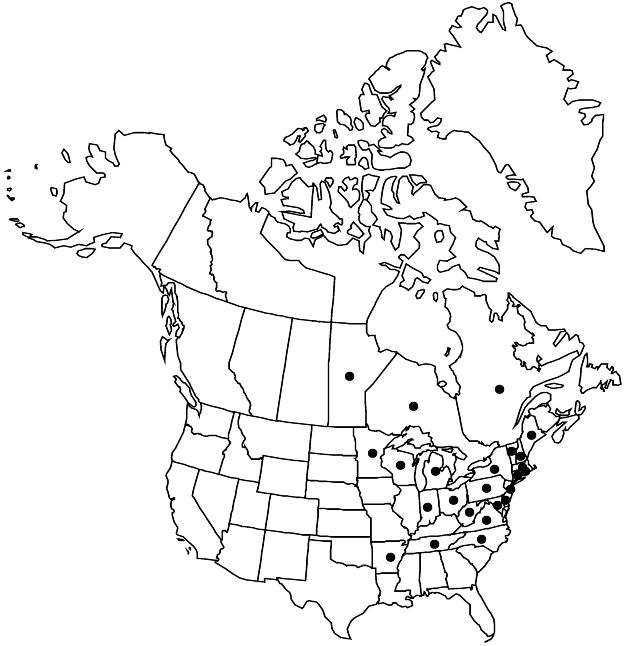Prunus pumila var. susquehanae
Ziergeh. Gärt. Parkanl., 400. 1865.
Common names: Appalachian or Susquehanna sandcherry cerisier de la Susquehanna
Endemic
Basionym: Prunus susquehanae Willdenow Enum. Pl., 519. 1809
Synonyms: P. cuneata Rafinesque P. pumila var. cuneata (Rafinesque) L. H. Bailey P. pumila subsp. susquehanae (Willdenow) R. T. Clausen
Stems usually erect-ascending, sometimes decumbent, 3–10(–20) dm; twigs densely puberulent (10× magnification). Leaf blades elliptic, broadly elliptic, or obovate, 3–5.8(–7.2) × 1.1–2.5(–3) cm, lengths ca. 2.6 times widths, base obtuse to cuneate, apex usually obtuse, sometimes acute or rounded. Drupes subglobose, 8–12 × 5–10 mm; stones subglobose to ovoid, 6–8 × 5–6 mm. 2n = 16.
Phenology: Flowering Apr–Jun; fruiting Jul–Aug.
Habitat: Sandy pine-oak woods or barrens with open canopy, or adjacent fields and lakeshores
Elevation: 30–500 m
Distribution

Man., Ont., Que., Ark., Conn., Del., Ind., Maine, Md., Mass., Mich., Minn., N.H., N.J., N.Y., N.C., Ohio, Pa., R.I., Tenn., Vt., Va., W.Va., Wis.
Discussion
Selected References
None.
Lower Taxa
None.